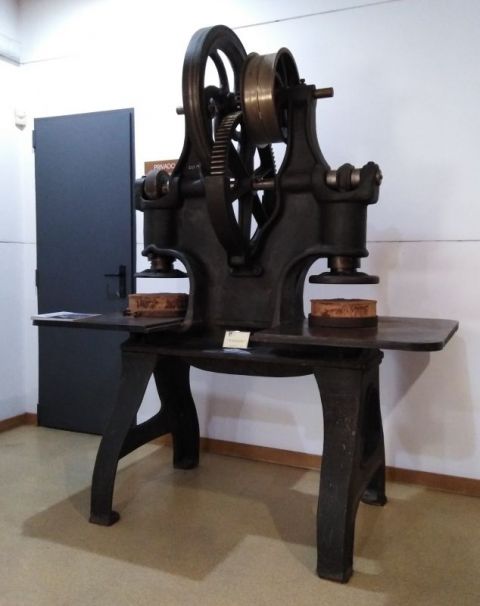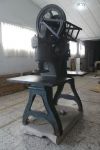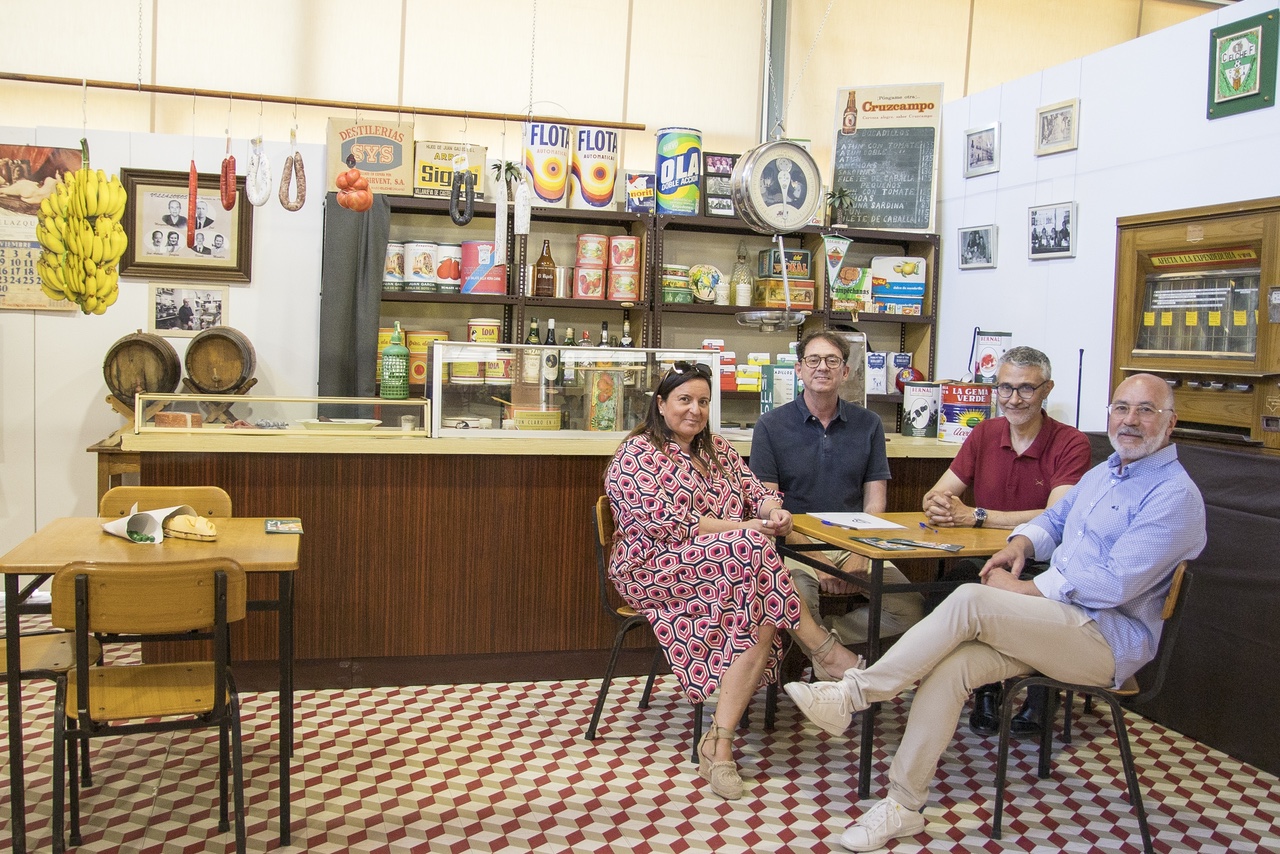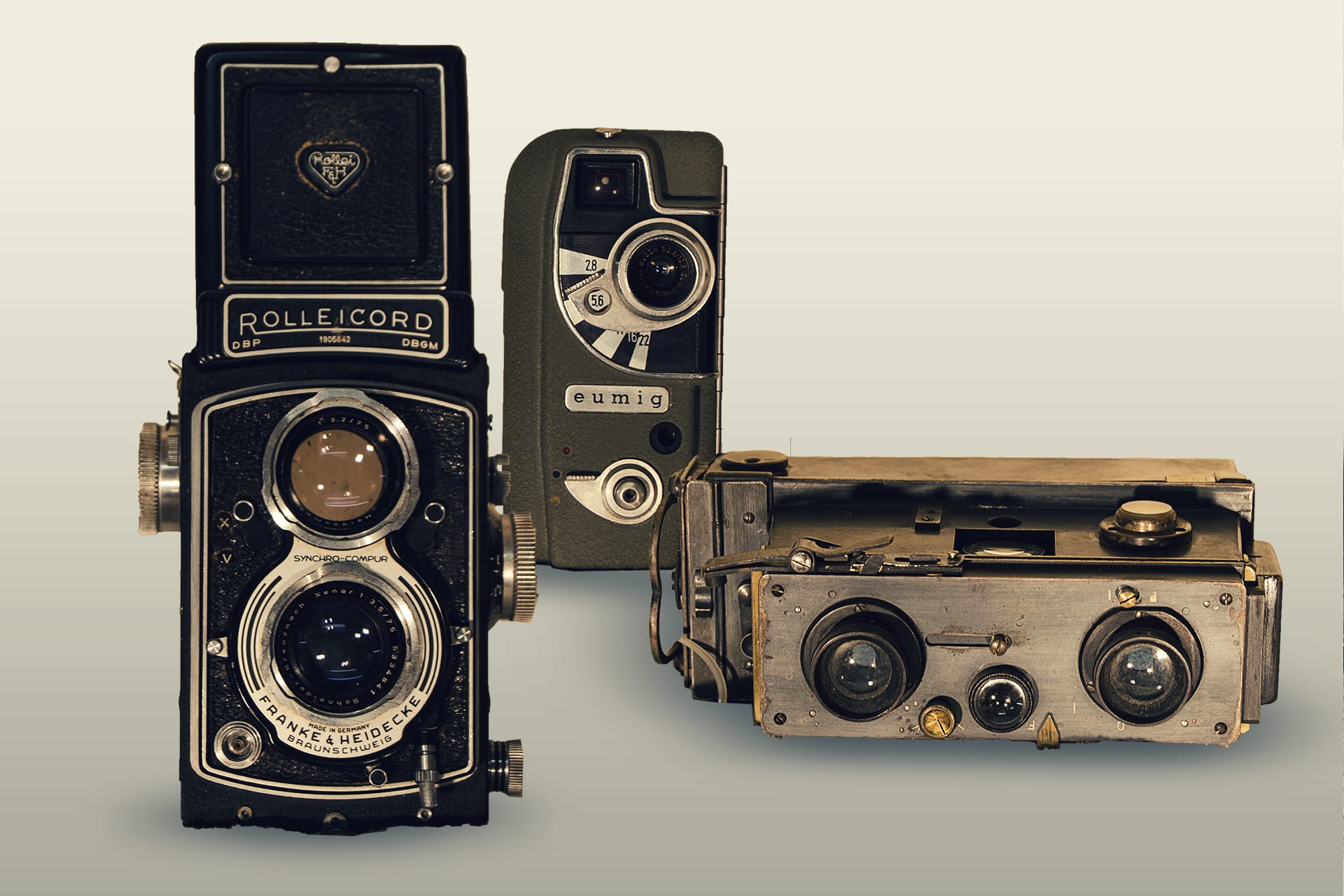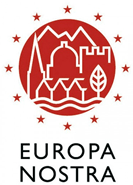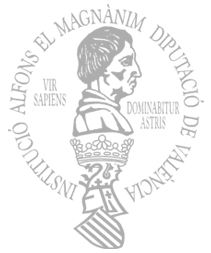
The die cutter of the Pusol School Museum
03-08-2020
The present text has been extracted from the study on this die cutter commissioned to the Pusol School Museum (2019) by the Spanish Association of Shoe Components Companies (AEC).
A die cutter is a die-cutting machine, that is, a machine which serves to "die-cut leather parts, cartons, etc."[2]. There are different typologies, although the one we are dealing with was used in the footwear industry.
According to Amat, "although die-cutting machines existed since the mid-19th century, they were used only for the cutting of hides of older animals used for floors, buttresses, etc."[3] [...] "In the preparation section for manufacturing mechanics or better known as die cutting, the old machinery with more than a century is reduced to manual die cutting machines (some moved by animal traction), die-cutting machines employing steel dies for soles and buttresses, hand-held leather equalizers and fencing machines, [...]"[4]. We are therefore dealing with machines whose origin dates back more than a century, during which time there have been undoubted advances in general, and in safety in particular.
Amat tells us that within the production process of footwear, punching is part of the "preparation for manufacturing mechanics"[5], which comprises a set of works prior to the dynamics of the shoe itself.
How did the die cutter work?
The die-cutting machine, constructed entirely of iron, was composed of two plates, placed on two wooden pylons[9] resting on the corresponding platforms (Figures 1 and 2). It is a double die cutter (it has two plates), in which two operators worked, one in front of the other. It operated with electricity, by means of a system of belts and pulleys that transmitted the driving force, both to it and to other machines, through a shaft or transmission shaft, from the turbine or the central motor. This system made it possible to "move through a single source of energy all the machines of a factory"[10], although it determined their placement "by having to place [the machines] in rows, also conditioning the type of linear construction of the buildings"[11].
The die cutter worked constantly and the plates went up and down continuously, alternately, while the operator had to prepare the material and place it under the plate as it went up, quickly removing the hands to avoid accidents when lowering the plate and pressing on the die.
According to Amat, "the punching machine consists of a fixed plate on which a pylon is located, usually made of wood. On the pylon is placed the skin to be cut and on top of this, the die or cutting blade. The cut is produced by pressing a moving plate, located at the top, on the die and the skin [...]"[12].
In this sense, we reproduce the testimony of a former operator of one of these die cutters, who worked in the Ilicitan factory known as "La Zapatillera"[13]:
"[The die cutter] was used to cut all kinds of fabrics, including rubber, crepe [...], all kinds of items cut the machine this". [... ] "As the machine worked as I tell you, it had two plates, one on each side, a little wider than this, and [...] does not have much to explain. As I told you before, its pylon down, set of dies, each set of dies has a measure: a few dies that were four centimeters, five, six, seven... So, the plate, if you gave it for the right it would go down and if you gave it for the left it would go up. Before I put in, if you were cutting with a six-centimeter high die by... and you put in another of four, you had to lower the plate, give it a couple of turns until [...] its measure" [14].
The testimony of the interviewee shows the danger of this machine:
"[... ] Of course it was dangerous and so dangerous... [... ] This machine and cylinders the most dangerous of... that was then in the footwear industry [...] Because if you caught you cut your finger "to the count", understand? You don’t see how this one stayed... [... ] I cut myself with a piece of cardboard stone, which is a cardboard, yes, you know the cardboard stone... [... ] The die was leaking a lot, then, when you put the die, you see that it slipped a little bit, it would stumble, surely, [...] because there is no other explanation, I would trip the die with the plate, rose and caught my finger... [... ] But there are many of these in Elche, you understand?" [15].
The die cutter of the Pusol School Museum
For the study of our machine (Figure 3) has been of vital importance its comparative analysis with others of similar invoice located in the environment: one existing in the company name "Algorós dies", of Elche (exposed in the car park of the company) and another that is exhibited at the Elda Shoe Museum. Specifically, in the poster of the piece preserved in the latter museum can be read:
"Die-cutting machine for leather soles with two plates. Prefabricated Vicent, SL, 1928".
Thus, we are facing a machine that worked already in the first third of the twentieth century, model that would probably be manufactured for years. A series of advertisements appeared in the weekly Idella, in Elda, at the end of the twenties, advertising the Elden workshop of Eustaquio Cantó Amat, in these terms:
"Construction of machinery and accessories for the manufacture of footwear. Always stock. Free quotes and catalogue"[16].
However, neither the Elda or the Pusol (nor the Algorós) die cutter presents any plate that reports the manufacturer, a fact that leads us to think - with the restorer of the piece, Eva Mendiola - that this could be done in a local workshop.
The machine conserved in Pusol has at its upper end a metal element incorporated later, whose utility was to serve as a support to the engine that made it work, installed when -later- the transmission was eliminated by means of horizontal axis. In addition, a differential was applied, probably already in its last stage of operation, element that has been removed after the restoration process to which the part has been subjected.
Apparently, machines like the one studied were active in "La Zapatillera" until the closure of this factory, in the early eighties, which says a lot about the solidity and quality of those, and the precarious security in which they worked until recently.
Author: Rafa Martínez, director of Proyecto Pusol.
[2] Real Academia Española, RAE, https://dle.rae.es/? id=aoLgeH3 (see: 27/07/2020).
[3] Amat Amer, J. Mª (1999): Shoe technology. Elda, edited: José Mª Amat, p.88.
[4] Ibidem, p.89.
[5] Ibidem, p.76.
[6] Amat Amer, J.Mª (1999), op.cit. , p.81.
[7] According to the Royal Spanish Academy, in its third sense, a die is an "instrument or machine with cutting edges for precisely trimming plates, cartons, hides, etc.". See Real Academia Española, RAE, op.cit. , https://dle.rae.es/? id=aoLPQoy (see 27/07/2020).
[8] Ibidem, p.178.
[9] The wooden pylons that could have been used in the machine of the Pusol School Museum have not been preserved.
[10] Cerdà, M. and García Bonafé, M. (dirs.) (1995): Valencian Encyclopedia of Industrial Archaeology. Valencia, Edicions Alfons el Magnànim, pp.261-262.
[11] Ibid.
[12] Amat Amer, J. Mª (1999), op.cit. , p. 227.
[13] "La Zapatillera" was an Ilicitan footwear factory created in the 1930s that was active until 1983. This company gave its name to the neighborhood of the city where it was located for decades, now known as "La Zapatillera" neighborhood. The name of the factory was Industrias del Caucho y sus Regenerados, SA, INCASA. In the die cutting section of this factory there were two machines as studied and worked in shifts. That is, they worked four people (two per machine) in each shift; eight people in total covered this section (information provided by Rafael Martínez Carpena -Elche, 09/04/1936-, footwear worker of "La Zapatillera" since 1947, currently retired).
[14] Testimony of Jenaro Ruíz Contreras (Membrilla, Ciudad Real, 13/12/1928), "La Zapatillera" footwear worker between 1954 and 1983, currently retired.
[15] Ibid.
[16] Idella. Independent Weekly founded by D. Manuel Maestre Gras, nº 162, April 27, 1929, p.3. Biblioteca Valenciana Digital, https://bivaldi.gva.es/es/publicaciones/numeros_por_mes.do?idPublicac=903&anyo=1929. Eustaquio Cantó is announced in this publication, at least, from a few weeks ago, although without the image of the die cutter, which begins to be inserted in that number.
